▼ India is the world's second largest LPG importer [04-25-17]
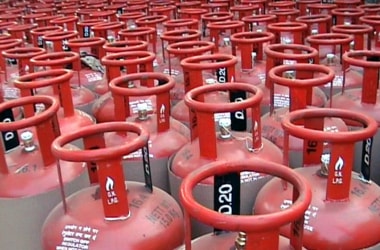 India has become world’s second largest LPG importer, a position that was previously occupied by Japan. India has become world’s second largest LPG importer, a position that was previously occupied by Japan.
China remains as the world’s top importer.
According to Petroleum Planning & Analysis Cell, LPG imports in the country has increased 23% during the financial year 2016-2017 to about 11 million tonnes.
The main reason behind the increase in the consumption of LPG in India is due to the two government schemes coupled with free gas connections.
From May 2016, the government is providing free cooking gas connections to women from extremely poor households, to reduce the use of polluting fuels such as wood and dried cow dung.
This has increased India’s active LPG users to about 200 million, which is 60% more than Japan’s entire population.
According to the World Health Organization, polluting fuels used for cooking purposes results in 1.3 million premature deaths in India every year.
India has set an ambitious target of increasing LPG usage to cover 80% of the households by March 2019.
As per the present estimates of the oil ministry, demand for fuel will touch 35 million tonnes by 2031-32 in India.
Pradhan Mantri Ujjwala Yojana (PMUY)
- PMUY was launched by Prime Minister Narendra Modi in May 2016 with the tagline of Swachh Indhan, Behtar Jeevan.
- The scheme’s motive is to provide free of cost LPG (cooking gas) connections to women from BPL Households.
- The scheme seeks to empower women and protect their health by shifting them from traditional cooking based on unclean cooking fuels or on fossil fuels to clean cooking gas.
- It is being implemented by Union Ministry of Petroleum and Natural Gas.
- The scheme will be implemented over three years’ time period until the financial year 2018-19.
|
▼ GST to boost growth by 4.2%: US Fed [04-24-17]
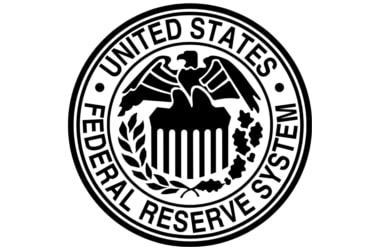 The goods and services tax (GST) can boost India's GDP growth by up to 4.2 per cent – double the previous estimate – as lower taxes on manufactured goods will bump up output and make products cheaper, according to the US Fed Reserve. The goods and services tax (GST) can boost India's GDP growth by up to 4.2 per cent – double the previous estimate – as lower taxes on manufactured goods will bump up output and make products cheaper, according to the US Fed Reserve.
GST could reduce inefficiencies in the production process while eliminating the current compounding effect of different central and state levies.
Termed the biggest tax reform since Independence, GST will unify at least 10 indirect taxes into one to be collected at state and central levels.
In the International Finance Discussion Paper (IFDP), the US Fed researchers said GST is an inclusive policy that is also expected to bring down overall domestic and international trade barriers.
GST is expected to raise overall Indian welfare and is projected to be an inclusive policy in that it would be welfare improving for all Indian states.
The Fed research note stated that assuming the aggregate weighted GST rate is 16 per cent, there would be positive impact on real GDP of 4.2 per cent.
The model suggests that GST would lead to real GDP gains of 4.2 per cent under the baseline assumptions, driven by a surge in manufacturing output.
GST would raise overall welfare by 5.3 per cent in India.
Under the existing structure, at each point of sale, additional taxes are applied to the after-tax value of each goods and services.
The main purpose for GST is to eliminate this compounding effect by fixing the final tax rate, where goods will fall into one of the four rate categories of 5, 12, 18, and 28 per cent.
The unified structure is currently expected to be rolled out in July.
GST's impact on GDP growth as estimated by Fed economists is much higher than the 1-2 per cent as expected by the Indian government.
IMF, World Bank Views on GST
- The International Monetary Fund (IMF) had earlier this year said GST could help raise India's medium-term GDP growth to over 8 per cent.
- This could create a single national market for enhancing efficiency of movement of goods and services.
- Even the World Bank has said a smooth implementation of GST could prove to be a significant push to economic activity as growth could pick up to 7.2 per cent in 2017-18.
- It will move further to 7.5 per cent in 2018-19.
|
▼ Largest Indian Engineering Sourcing Show IESS opens in Chennai [04-24-17]
According to EEPC India, Russia coming forward as the Partner Country in this event is a testimony to the stature achieved by IESS. India has a long standing partnership with Russia in engineering sector.
A large 120 member delegation from Russia is exhibiting their technology and products at the IESS 2017.
As many as 400 top global exhibitors and over 500 foreign delegates are participating in this flagship engineering event which is built around the theme – “Smart Tech for Smart Engineering”.
Besides Russia, delegates from USA, UK, Germany, UAE, Brazil, South Africa, Algeria, Benin, Botswana, Egypt, Ethiopia, Ghana, Kenya, Namibia, Uganda, Vietnam, Bangladesh, Sri Lanka, Ukraine, Uzbekistan and Nepal are also visiting IESS, which has emerged as one of the most prestigious engineering sourcing shows in the country.
This edition of IESS has exclusive Technology and Innovation Pavilions with representations from BARC, IIT Mumbai, IIT Madras, FCRI (Fluid Control Research Institute), ARCI (International Advanced Research Centre for Powder Metallurgy and New Materials), CMTI (Central Manufacturing Technology Institute) and MSME Tools Room.
IESS, across its five previous editions, has left an indelible footprint of success.
India's engineering exports are likely to reach USD 60+ billion in the fiscal 2016-17, on the back of revival of demand in the USA and for select products like iron.
For the April-January period of ten months of the current fiscal, the engineering exports have touched a figure of USD 50.87 billion, exceeding the total shipments of USD 49 billion in the entire financial year of 2015-16.
For January, 2017 engineering exports aggregated USD 5.29 billion, showing an increase of over 12 % over the same month last fiscal.
|
▼ Sovereign Gold Bond Scheme 2017-2018 Series 1 by RBI [04-24-17]
The Sovereign Gold Bond Scheme 2017-18--Series I will be opened for subscription from 24 to 28 April, 2017. The bonds will be issued on 12 May.
The issue price of the bond is based on the simple average closing price (published by the India Bullion and Jewellers Association) for gold of 999 purity of the week preceding the subscription period.
It works out to be INR 2,951 per gram.
However, the government, in consultation with the RBI, has decided to offer a discount of INR 50 per gram on the nominal value of the Sovereign Gold Bond.
Hence, the issue price of gold bond for this tranche has been fixed at INR 2,901 per gram of gold.
The bonds would earn an interest of 2.75% per annum, payable every six months on initial investment.
The tenor of the bond will be for a period of 8 years with exit option from fifth year to be exercised on the interest payment dates.
The minimum investment limit into these bonds is one gram of gold, while the maximum amount subscribed by an entity cannot be more than 500 grams per person per fiscal year
The bonds will be sold through banks, post offices, Stock Holding Corporation of India (SHCIL), and recognised stock exchanges—National Stock Exchange (NSE) and BSE.
Given that the short-term outlook for gold looks promising, investors can hope to make tidy gains on the interim rally as well.
Investors who are looking for investing in gold can go for sovereign gold bonds.
These bonds are issued by the Government of India and offer returns linked to gold price.
Investors will also get a coupon of 2.5 per cent per annum.
The capital gains you make by investing in these bonds is tax exempt, provided you hold them till the end of the tenure of eight years.
Exit, though, is allowed from the fifth year through the secondary market. But this will result in capital gains tax of 20 per cent (with indexation benefit).
Interest on these bonds - a promised 2.5 per cent rate - will be paid semi-annually.
The other paper form of gold - Gold ETFs - has the disadvantage of higher costs.
|
▼ Digitally developed economies to progress: GCI [04-19-17]
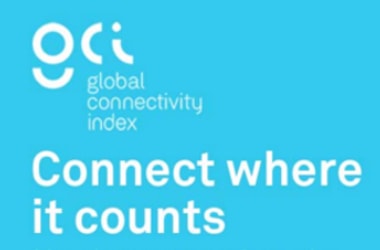 Digitally-developed economies around the globe are continuing to progress due to larger investments and adoptions in Information Communication Technology, says the newly released Huawei Global Connectivity Index (GCI) 2017. Digitally-developed economies around the globe are continuing to progress due to larger investments and adoptions in Information Communication Technology, says the newly released Huawei Global Connectivity Index (GCI) 2017.
The study also finds developing economies have started to accelerate their growth by investing strategically in ICT capabilities, yet the gap between them and continues to grow.
This is the fourth annual GCI study that shows how countries are progressing with digital transformation based on 40 unique indicators that cover five technology enablers: broadband, data centres, cloud, big data and Internet of Things.
US tops the list with Singapore and Sweden a close second and third.
India performs well on the key indicators of a knowledge economy but falls behind in its broadband assessments–giving it an overall rank of 43–between Venezuela and Morocco.
For India which has climbed one rank from last year, the government is planning to provide high-speed internet connectivity to 250,000 communities.
The citizens will be provided with a digital identity which will be unique, lifelong, online, and valid.
Government departments will be seamlessly integrated with high-speed optical fibre, which will improve inter operability of these organizations and will result in real-time service delivery from online or mobile platform.
This would stimulate the development of cloud for easy and portable connections for citizens.
It is encouraging to note that over the past 3 years, India has grown faster in ICT infrastructure compared to its global peers including 1.4 times faster growth in investment in cloud, 2.3 times growth in computer households and 1.1 times in Analytics Data Creation per capita.
GCI 2017 study reported the relationship between ICT investment and GDP growth is generally accepted in government and industry.
Examining the GCI 2017 data with numerous economic forecasting models, the report says a nation which increased investment in ICT investment in infrastructure by additional 10% annually from 2017 to 2025 can benefit from a multiplier effect.
Using this economic impact model, the report finds that every additional US$1 of ICT infrastructure investment could bring a return of US$3 in GDP at present, US$3.70 in 2020 and the potential return increases to US$5 in 2025.
|
▼ New WB report pegs increased India GDP [04-18-17]
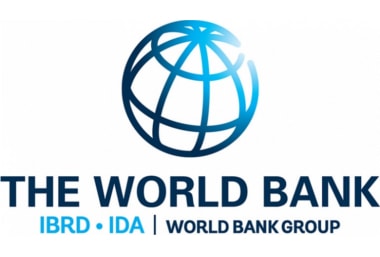 India’s gross domestic product is expected to spike to 7.2% in the 2017-’18 financial year from 6.8% the previous fiscal. India’s gross domestic product is expected to spike to 7.2% in the 2017-’18 financial year from 6.8% the previous fiscal.
This is according to a new World Bank report titled “Globalization Backlash”, which was released on April 16, 2017.
The international agency forecast that India’s economic growth will rise gradually to 7.7% in 2019-’20, “underpinned by a recovery in private investments”.
The World Bank analysis, however, has warned against significant risks to India’s favorable growth outlook.
Among them, there are uncertainties in the global environment, an unclear picture of the impact demonetisation has had on small and informal firms, hindrances to private investment and rapid hikes in the prices of oil and other commodities.
A timely and smooth implementation of the GST could prove to be a significant upside risk to economic activity in FY17/18.
The World Bank’s “Globalization Backlash” report focuses on the gross domestic product climate in South Asia, predicting that growth in the region will maintain momentum.
South Asia remains the fastest growing region in the world and the strong performance in the eastern part of the region, in particular in India, Bhutan and Bangladesh, defied disappointing world growth in 2016.
The current globalization backlash should thus not dissuade South Asian countries from having a stronger outward orientation.
|
▼ India, world record bumper cereal crop: FAO [04-18-17]
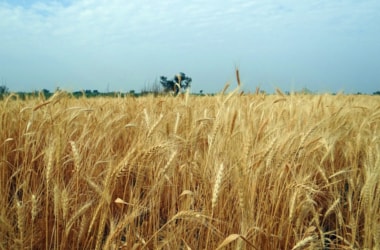 Humanity harvested the largest ever cereal crop in its history in 2016-17 - a staggering 2.6 billion metric tonnes, according to the latest estimates of the UN-affiliated Food and Agriculture Organisation (FAO). Humanity harvested the largest ever cereal crop in its history in 2016-17 - a staggering 2.6 billion metric tonnes, according to the latest estimates of the UN-affiliated Food and Agriculture Organisation (FAO).
The year is ending with the largest ever global stock of foodgrains in history, some 682 million tonnes.
India too is heading for a record cereal crop as the previous year's final wheat is harvested and counted in.
According to reports, the second advance estimate of the government put cereal production for 2016-17 at nearly 250 million tonnes, crossing the record of about 246 million tonnes set in 2013-14.
While the world celebrates this plentiful harvest, over 20 million people are facing starvation in Africa and Yemen in the worst drought in 60 years.
Globally, some 795 million people go to bed hungry every day, according to the World Food Programme. This includes about 15% of India's population, some 20 million people.
The global output was fuelled by increased wheat output in North America — by more than 10 million tonnes year on year - and increases in the Russian Federation and India.
All these offset the European Union decline by 16.5 million tonnes caused by bad weather.
Rice output increased in China, India, and Southeast Asia. Coarse cereal production jumped by 22.7 million tonnes, led by US, EU, India and Ukraine, offsetting El Nino-caused declines in Brazil and policy-driven dip in China.
FAO is now forecasting a slight dip in world cereal production in 2017, mainly due to a fall in wheat output in Australia, Canada and the US after farmers planted less seeing lower prices.
Elsewhere there is famine in Africa. According to aid agencies and the UN, the food crisis in East Africa and Northern Nigeria is mostly because of continued war and consequent disruption of economy and connectivity.
|
▼ India is 7th largest tourist economy in the globe [04-7-17]
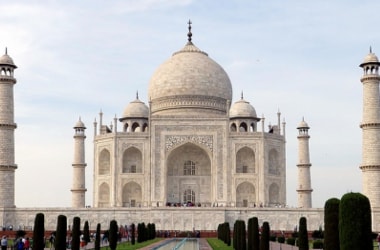 India ranks 7th in tourism economy in terms of GDP according to the WTTC (World Travel and Tourism Council). India ranks 7th in tourism economy in terms of GDP according to the WTTC (World Travel and Tourism Council).
According to data, the travel and tourism sector generated INR 14.1 trillion (USD208.9 billion) in 2016.
This makes it the world’s 7th largest in terms of absolute size; the sum is equivalent to 9.6% of India’s GDP.
Additionally, the sector created 40.3 million jobs in 2016, which ranks India 2nd in the world in terms of total employment generated.
The sector accounts for 9.3% of the country’s total jobs.
India’s Travel and Tourism sector was also the fastest growing amongst the G20 countries, growing by 8.5% in 2016.
A further 6.7% growth is forecast for 2017.
India’s figures are predominantly generated by domestic travel, which accounts for 88% of the sector’s contribution to GDP in 2016.
Visitor exports, money spent by foreign travellers in India, only represents 12% of tourism revenues and in 2016 totalled Rs 1.5 trillion (USD22.8bn).
This is 5.4% of the country’s total exports, compared to a global average of 6.6%.
Data from the UN World Tourism Organisation (UNWTO) shows that India received only 9 million international arrivals in 2016, placing it at 40th place in the world; a tenth of those received by top-ranking France.
However, there is a lot of potential for India to grow their visitor exports.
WTTC data suggests that visitor exports will grow by 5.4% in 2017.
WTTC: Know More
- Headquarters: London, United Kingdom
- Founded: 1990
- Industry: Travel & Tourism
- Chairman: Gerald Lawless
|
▼ India's growth slips [04-3-17]
 Growth of the country’s eight core sectors slipped to an over one-year low of 1% in February 2017. Growth of the country’s eight core sectors slipped to an over one-year low of 1% in February 2017.
This was mainly due to a fall in output of crude oil, natural gas, refinery products, fertiliser and cement.
The eight core sectors had expanded 9.4% in February 2016, and 3.4% in January 2016.
In February 2016, crude oil output contracted 3.4%, natural gas output by 1.7%, refinery products output fell 2.3%, fertiliser output declined 5.3%, and cement output dropped 15.8%.
But coal and steel production recorded positive growth during the month.
The eight core industries comprise close to 37.9% of the weight of items included in the Index of Industrial Production (IIP).
The electricity has the maximum weight (of 10.32%) among the eight sectors followed by Steel (6.68%), Petroleum Refinery (5.94%), Crude Oil production (5.22 %), Coal production (4.38 %), Cement (2.41%), Natural Gas production (1.71 %) and Fertilizer production (1.25%).
|
| Chronology of events |
|
Beginning from May 1, Oil PSUs have decided to change petrol and diesel prices every day in synchronisation with international rates similar to what is practiced in advanced markets.
|
|
The Central government has proposed to dismantle the finance ministry committee which gives approval to PPP projects to speed up the procedural delays and fostering ease of doing business.
|
|
Anil Agarwal, an Indian billionaire, in the second week of April 2017 became the second largest shareholder (11.44 per cent) in a British mining group, Anglo American.
|
|
Retirement fund body Employees Provident Fund Organisation, EPF has decided to bring out an exit policy to liquidate its investments in government securities, exchange-traded funds (ETFs) and state loans to maximise returns for its members.
|
|
The theme of this year’s edition is ‘Safe Roads and Smart Mobility: The Engines of Economic Growth’.
|
|
The Indian Oil Corporation (IOC) has planned to build a new oil terminal at Motihari in Bihar to supply fuel to Nepal via the planned pipeline up to Amlekganj in Nepal.
|
|
IMF officials also said that well-implemented trade agreements can contribute to economic prosperity for all concerned.
|